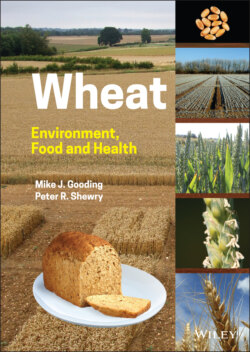Читать книгу Wheat - Peter R. Shewry - Страница 36
1.4.5 Producing White and Wholemeal Flours by Roller Milling
ОглавлениеAlthough there has been increased interest in recent years in the use of whole grain flour, most wheat‐based foods, including breads, pastries, cakes, cookies, noodles, and pasta, are still made from white flour. The art of the miller is to maximize the recovery of white flour by increasing the yields of the purest fractions and combining them to achieve a high total flour yield from a given weight of grain (i.e. the flour extraction rate). However, the purity of the combined flour will inevitably decrease as the extraction rate increases, with a trade off between yield and purity. The purity of the flour is often monitored as ash content, as ash is derived from minerals which are concentrated in the bran fractions. In addition to varying in purity, the white flour fractions produced by milling will also vary in their contents and compositions of other components, resulting from gradients in composition within the starchy endosperm (Chapter 8). Thus, although the > 20 fractions produced by modern roller milling do not correspond to precise regions of the starchy endosperm they do differ in their compositions (e.g. Gonzalez‐Thuillier et al. 2015). There is, therefore, an opportunity to combine selected mill streams to produce specialist flours differing in their compositions and properties for processing and health (Shewry et al. 2019).
Wholegrain flour is produced by combining all the milling fractions in the proportions that they are produced, rather than by grinding the whole grain as is often thought. However, it is also possible to combine fractions to give high extraction flours, in which a proportion of the bran, notably the aleurone, is included. These flours may correspond to an extraction rate of 85% or more and are enriched in the fibre, minerals, vitamins, and phytochemicals present in the bran. It is also possible to use milling to produce germ‐rich fractions that can then be incorporated into flours to increase the contents of B vitamins, as in the Hovis patent of 1887. The relationship between extraction rate and the presence of other tissues in white flour is illustrated in Figure 1.20, based on the analysis of durum wheat milling fractions using biochemical markers.
